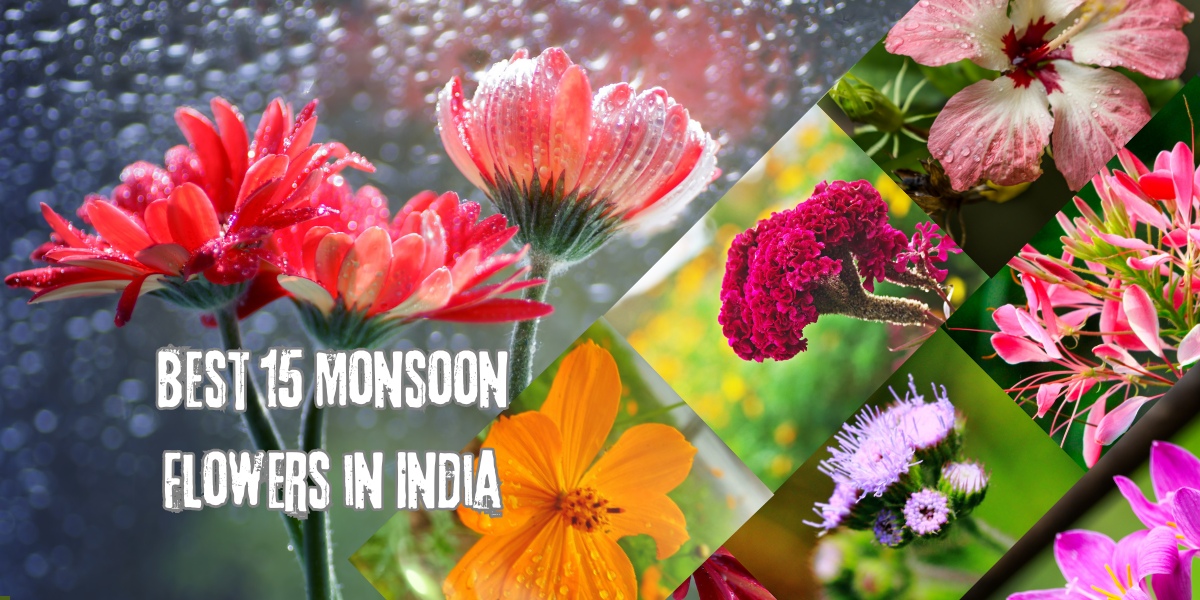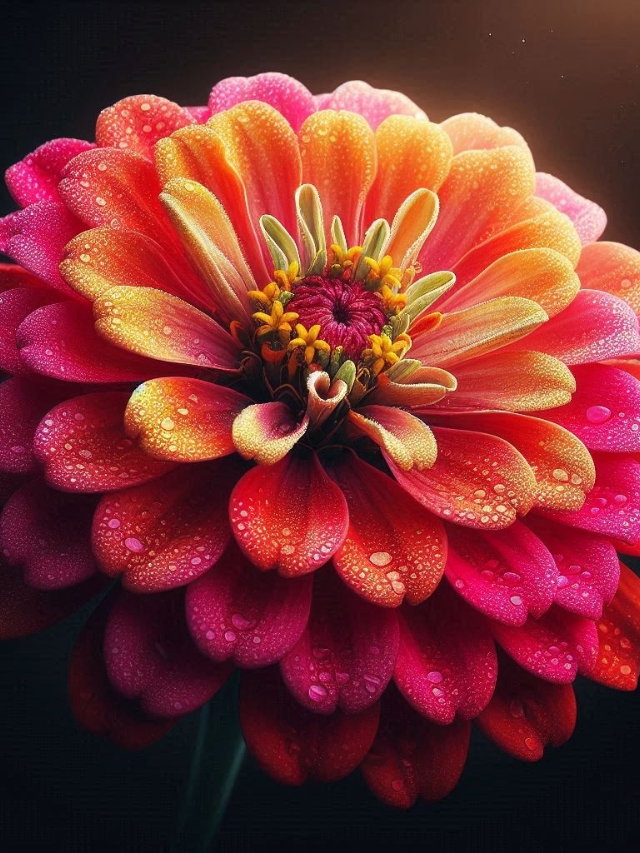Monsoon flowers in India create a magical time when nature comes alive with vibrant colors and lush greenery. The heavy rains bring much-needed relief from the scorching summer heat and breathe new life into the flora and fauna. One of the most delightful aspects of the monsoon season is the blooming of various flowers that add beauty and charm to the landscape. In this blog post, we will explore some of the most popular monsoon flowers in India that you can enjoy during this rainy season.
1. Rain Lily (Zephyranthes)
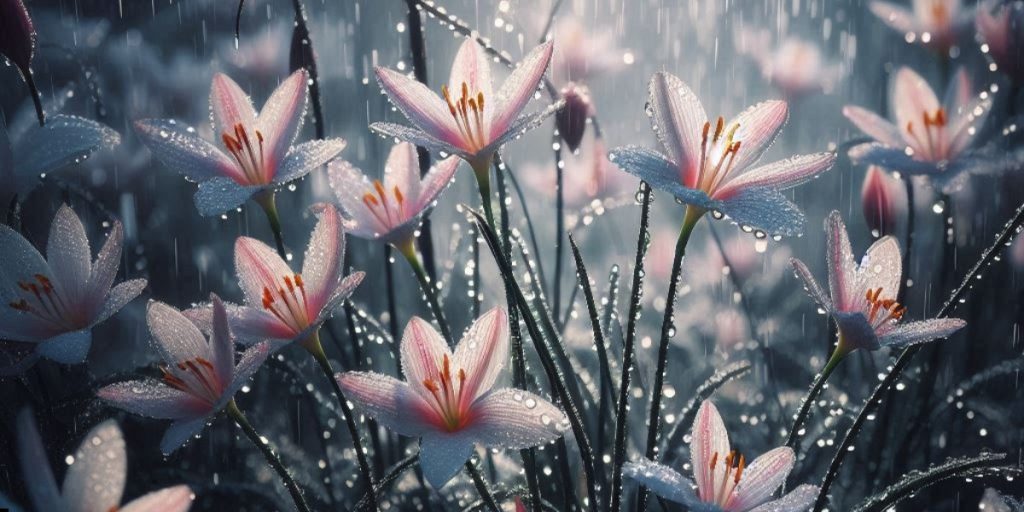
As the name suggests, rain lilies bloom with the onset of the monsoon rains. These delicate flowers are usually white, pink, or yellow and appear in clusters, giving a fairy-tale look to gardens and lawns. Rain lilies are also known for their ability to bloom multiple times throughout the monsoon season, making them a favorite among garden enthusiasts. This plant is best flowering plant for your garden as monsoon flowers in India.
2. Balsam (Impatiens balsamina)

Balsam, also known as garden balsam or touch-me-not, thrives in the monsoon season. These flowers come in shades of pink, red, purple, and white. Balsam plants are easy to grow and can quickly cover garden beds, providing a burst of color. The flowers are called touch-me-not because their seed pods burst open when touched, scattering seeds all around.
3. Hibiscus (Hibiscus rosa-sinensis)

Hibiscus, also known as the shoe flower, is a common monsoon bloomer in India. These flowers come in various shades of red, pink, yellow, and white. The bright, trumpet-shaped flowers attract bees and butterflies, adding to the vibrant ecosystem during the monsoon. Hibiscus flowers are also used in traditional medicine and for hair care. And this Hibiscus Flower is also known for 365 days flowering plants in India.
4. Lotus (Nelumbo nucifera)

The lotus is a symbol of purity and beauty in Indian culture. During the monsoon, ponds and lakes are adorned with these exquisite flowers. The large, pink or white petals and the distinct seed pod in the center make the lotus a captivating sight. Besides its visual appeal, the lotus also holds religious significance and is often used in rituals and offerings.
5. Cosmos (Cosmos bipinnatus)
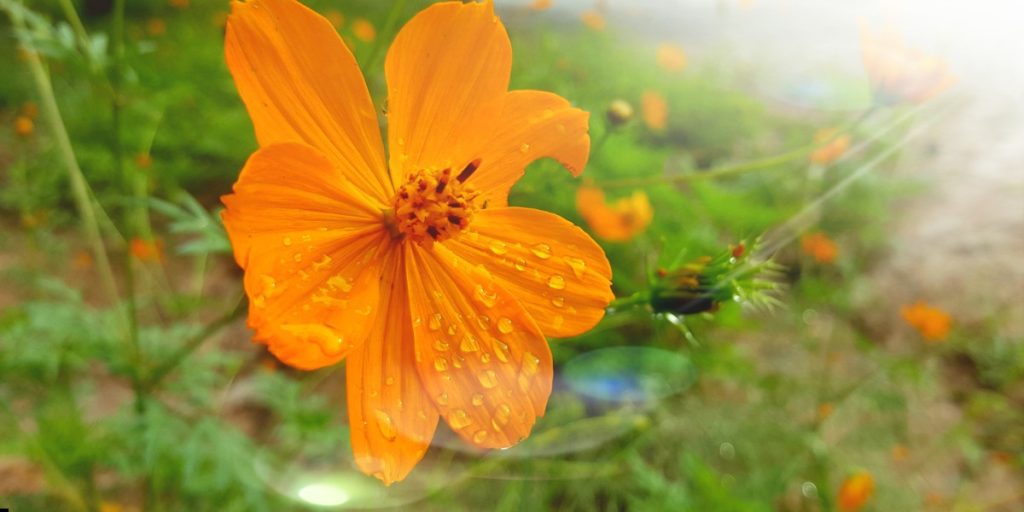
Cosmos flowers are a delightful addition to monsoon gardens. These daisy-like flowers come in shades of pink, white, and purple. They are easy to grow and attract butterflies, adding a touch of elegance and liveliness to any garden. This plant is best flowering plant for your garden as monsoon flowers in India.
6. Cockscomb (Celosia argentea)
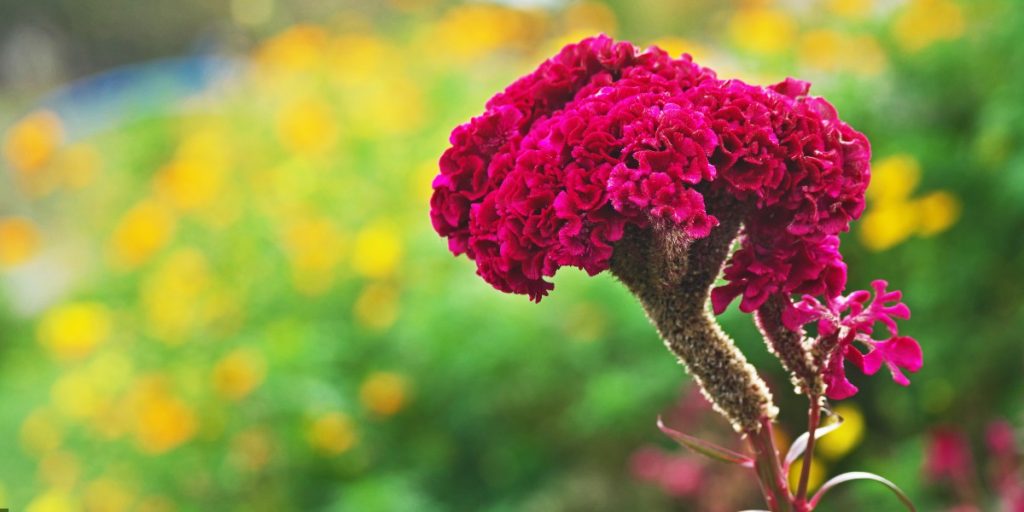
Cockscomb, or Celosia, is known for its unusual, velvety flower heads that resemble a rooster’s comb. These flowers come in bright colors like red, yellow, and orange. Cockscomb plants are hardy and thrive in the monsoon, adding an exotic touch to gardens.
7. Gulmohar (Delonix regia)

Also known as the flame tree, Gulmohar bursts into fiery red and orange blossoms during the monsoon. The tree’s umbrella-like canopy and the brilliant flowers make it a stunning sight. Gulmohar flowers create a picturesque view against the backdrop of the rain-washed landscape. This plant is best flowering plant for your garden as monsoon flowers in India.
8. Marigold (Tagetes)
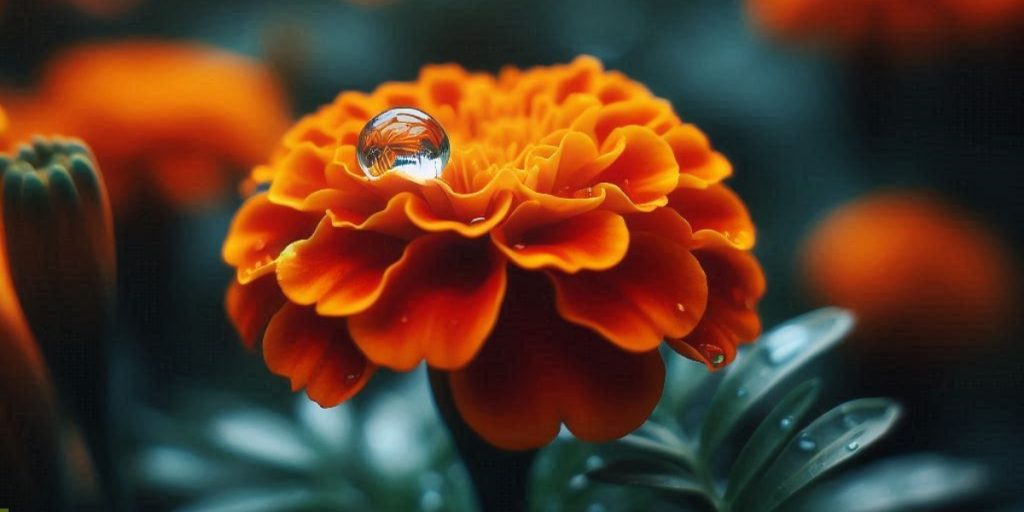
Marigolds are cheerful flowers that brighten up gardens and fields during the monsoon. Known for their vibrant yellow and orange hues, marigolds are easy to grow and are commonly used in festivals, weddings, and religious ceremonies. They are also known for their pest-repellent properties, making them a popular choice among gardeners.
9. Crape Jasmine (Tabernaemontana divaricata)

Crape jasmine, or Chandni, is a beautiful shrub that blooms profusely during the monsoon. The pure white flowers with their delicate fragrance add a serene charm to gardens and parks. Crape jasmine is also known for its medicinal properties and is used in traditional remedies for various ailments. And this Crape jasmine Flower is also known for 365 days flowering plants in India.
10. Sunflower (Helianthus annuus)
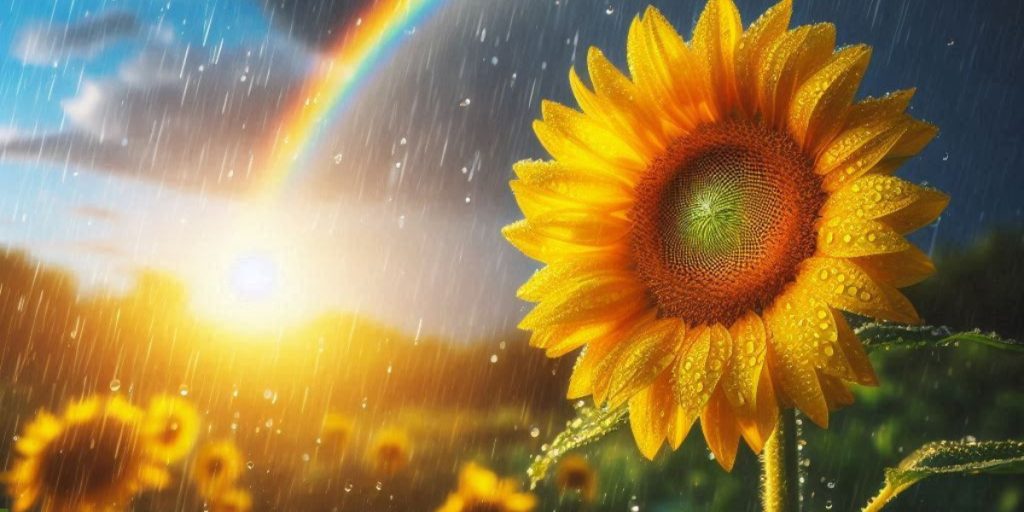
Sunflowers are well-known for their bright yellow petals and tall stems. During the monsoon, these flowers thrive and bring a burst of sunshine to the cloudy days. They are also beneficial for attracting pollinators like bees and birds.
11. Zinnia (Zinnia elegans)
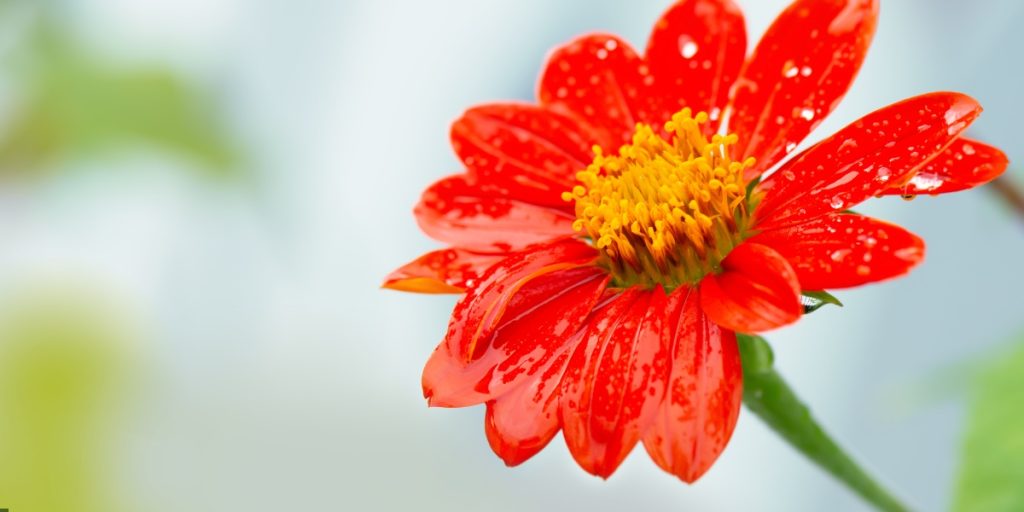
Zinnias are vibrant, multi-colored flowers that bloom beautifully during the monsoon. They are available in a variety of colors including red, pink, yellow, and white. Zinnias are easy to grow and can withstand the heavy rains, making them perfect for monsoon gardens. This plant is best flowering plant for your garden as monsoon flowers in India.
12. Cleome (Cleome hassleriana)
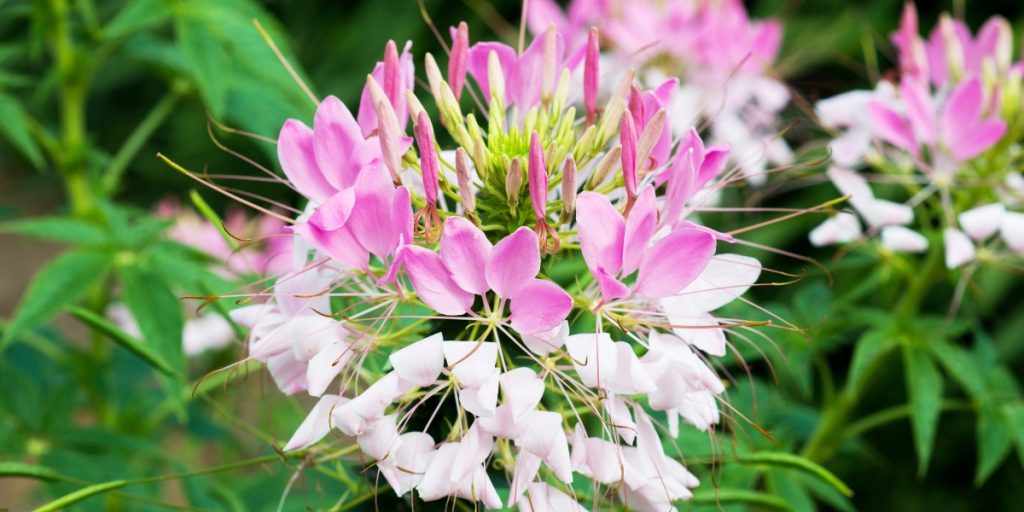
Cleome, also known as spider flower, is an eye-catching monsoon bloomer. These flowers have a unique appearance with their long stamens and come in shades of pink, white, and purple. Cleome plants are tall and add a dramatic touch to gardens. This plant is best flowering plant for your garden as monsoon flowers in India.
13. Salvia (Salvia splendens)

Salvia, or scarlet sage, is known for its striking red flowers that bloom during the monsoon. These flowers are not only beautiful but also attract hummingbirds and butterflies, enhancing the biodiversity of your garden.
14. Portulaca (Portulaca grandiflora)
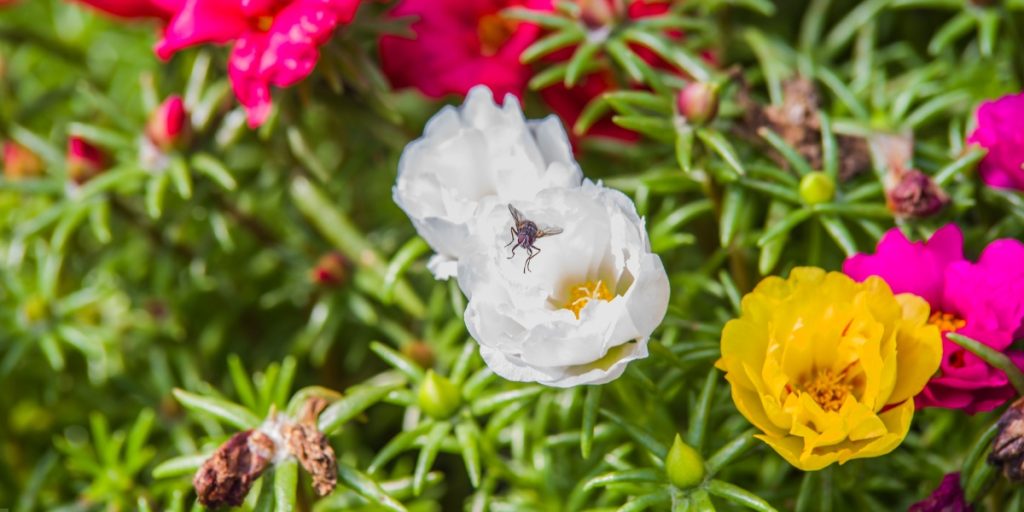
Portulaca, commonly known as moss rose, is a low-growing plant that produces vibrant, rose-like flowers. These flowers come in various colors including pink, red, yellow, and white. Portulaca is drought-tolerant and thrives in the monsoon season, adding a splash of color to garden beds and borders. This plant is best flowering plant for your garden as monsoon flowers in India.
15. Ageratum (Ageratum houstonianum)

Ageratum, also known as floss flower, is a lovely addition to monsoon gardens. These small, fluffy flowers come in shades of blue, pink, and white. Ageratum plants are compact and make excellent ground cover or border plants.
Tips for Growing Monsoon Flowers
- Soil Preparation: Ensure the soil is well-drained to prevent waterlogging, which can harm the plants. Adding organic compost can enhance soil fertility.
- Planting: Plant the seeds or saplings at the beginning of the monsoon to give them enough time to establish roots.
- Watering: While monsoon rains provide ample water, ensure proper drainage to avoid root rot. Water the plants only if there is a dry spell.
- Pest Control: Keep an eye out for pests and diseases that thrive in humid conditions. Use natural or chemical remedies to protect your plants.
- Pruning: Regularly prune the plants to encourage healthy growth and remove any dead or damaged parts.
Conclusion
Monsoon flowers add a splash of color and joy to the rainy season in India. From the majestic lotus to the cheerful marigold, and the exotic cockscomb, these flowers not only enhance the beauty of the surroundings but also bring a sense of freshness and rejuvenation. By growing these flowers in your garden, you can create a vibrant and lively space to enjoy the magic of the monsoon. So, embrace the season and let the beauty of monsoon flowers brighten your days.
What are monsoon flowers?
Monsoon flowers are plants that bloom during the rainy season, typically from June to September in India. These flowers thrive in the wet conditions brought by the monsoon rains and add vibrant colors to the landscape.
Which flowers bloom during the monsoon in India?
Some popular monsoon flowers in India include Lotus, Hibiscus, Gulmohar, Marigold, Balsam, Rain Lily, Crape Jasmine, Cosmos, Sunflower, Zinnia, Cleome, Salvia, Portulaca, Ageratum, and Cockscomb.
When is the best time to plant monsoon flowers in India?
The best time to plant monsoon flowers in India is just before the onset of the monsoon, typically in late May or early June. This gives the plants enough time to establish their roots and take full advantage of the rainy season.
Can I grow monsoon flowers in pots?
Yes, many monsoon flowers can be grown in pots. Ensure the pots have proper drainage holes to avoid waterlogging and use well-drained, fertile soil. Regularly check the moisture levels and place the pots in areas where they can receive adequate rainfall and sunlight.
How do monsoon flowers contribute to the ecosystem?
Monsoon flowers contribute to the ecosystem by providing nectar and pollen for pollinators such as bees, butterflies, and hummingbirds. They also help in maintaining soil health and preventing erosion due to their extensive root systems.
Can monsoon flowers be used for decorative purposes?
Absolutely! Monsoon flowers are perfect for decorative purposes. Their vibrant colors and unique shapes make them ideal for creating beautiful garden landscapes, floral arrangements, and decorations for festivals and special occasions.

